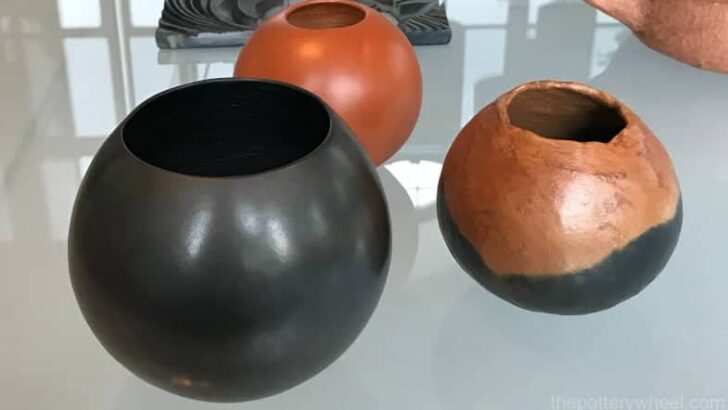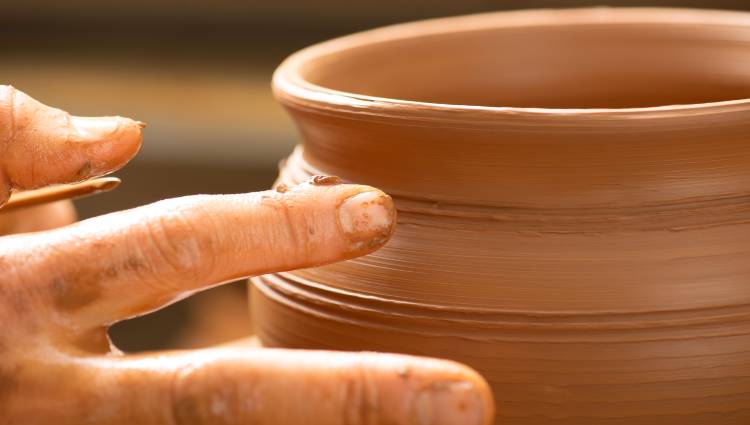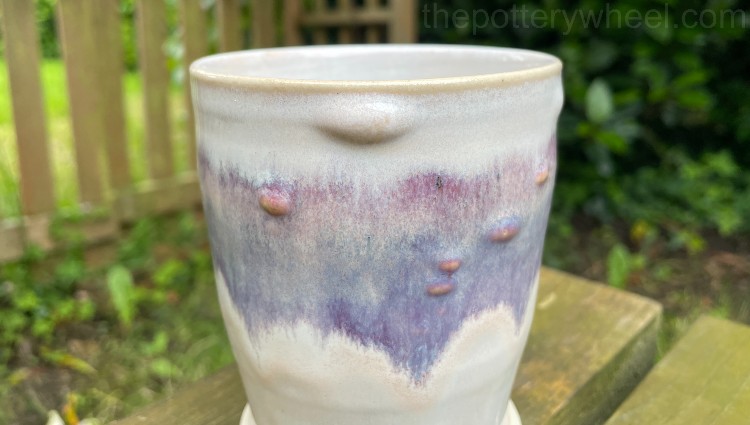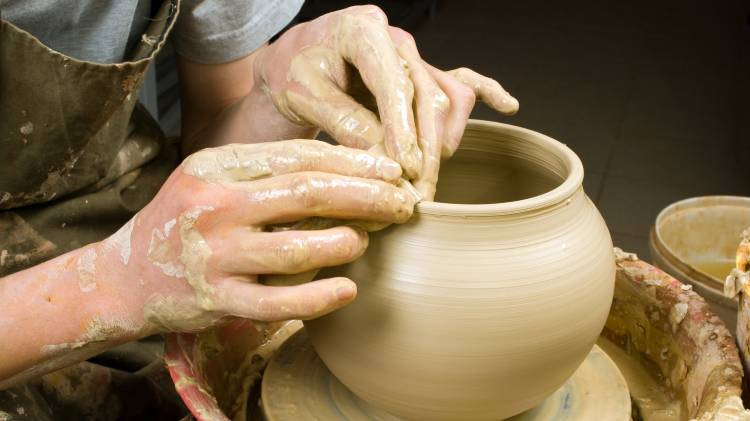If you are starting to use terra sigillata, it’s most likely that you have made your own batch. But perhaps you are wondering what temperature to fire terra sigillata. After all, if you have made your own, you won’t have any manufacturers firing guidelines! There is quite a variety of opinions about the temperature to fire terra sigillata. But having done some investigation, this is what I found out…
Some potters fire terra sigillata at mid and high fire temperatures. However, at mid or high fire temperatures, terra sigillata usually loses most of its trademark shine. So, the majority of potters fire it at low fire temperatures of up to 2014F (1100C), which is cone 02 or lower.
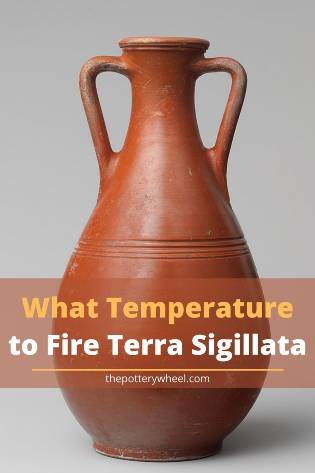
The Best Temperature to Fire Terra Sigillata?
If you read around or ask others, you will find lots of different answers to this question. Some potters recommend firing terra sigillata to a maximum temperature of 1450F (787C). This is around cone 015 on the Orton Cone Chart.
Others report that they successfully fire terra sig up to 2340F (1282C), or cone 10. With so many mixed opinions it’s hard to know what temperature to fire terra sigillata.
Nevertheless, most often it’s recommended that terra sigillata is fired in the lower temperature ranges.
And, generally speaking, the lower temperature ranges are considered anything up to around 2014F (1100C). So, you will find different potters recommending firing terra sigillata at temperatures that range up to about cone 02.
The reason for this is that at higher temperatures terra sigillata will often lose its characteristic shine.
The appeal of terra sigillata is that it can be polished up to a high sheen. This finished sheen is variously described as buttery, waxy, and glossy. It certainly gives pottery a luscious warm velvety quality. On the whole, it’s agreed that this polished finish is sacrificed if you fire in the mid to high range.
I tend to bisque fire terra sigillata at cone 06, which is 1823F (995C). After the bisque fire, I will fire raku fire to around 1652F (900C), which is around cone 010. Or I sawdust fire to around 1382F (750C) which is around cone 017.
However, some potters do fire terra sigillata with success at higher temperatures. And they reportedly do so without losing the lovely terra sigillata sheen. So how do they do it? Let’s take a look at that now….
Firing Terra Sigillata at Mid-High Fire Temperatures
The main factor in firing at higher temperatures is the kind of clay used to make the terra sigillata. Terra sigillata is essentially a very refined clay slip.
So, its main ingredients are clay, water, and a tiny amount of deflocculant. The clay you choose to make the terra sigillata affects its color and sheen. It also affects the temperature that it can tolerate being fired up to.
Grolleg kaolin clay is an English china clay that is sourced from Cornwall in the UK. Terra sigillata made of grolleg clay can reportedly be fired up to cone 10 without losing too much of its shine.
Other popular clay bodies used for making terra sigillata are Red Art, OM4 Ball Clay, and EPK Kaolin. Some potters will fire terra sigillata up to the mid or high fire temperature range. They find that their work has a good terra sig shine in this temperature range.
Others find that some of the shine is lost and that they are left with something more like a satin sheen. The resulting sheen is something like an eggshell finish.
So, if you want your pottery to be vitrified, then some of the terra sigillata shine will be lost. It’s a matter of weighing up the pros and cons. If you want your pots to be hard and nonporous, you will probably lose some of the shine.
However, if you are happy for your ceramics to be porous and on the softer side, then you can keep that high gloss sheen.
How Thick is the Terra Sig?
Another factor that affects the best firing temperature of terra sigillata, is its specific gravity or SG.
Specific gravity is one of those off-putting terms that sounds hard to grasp. However, put simply it refers to the density of a liquid compared to the density of water.
On the specific gravity scale, water has a value of 1. A liquid with an SG of 1.15 is 1.15 times denser than water.
Rhonda Willis states that terra sigillata will fire differently depending on its specific gravity. A terra sig with an SG of 1.10 will tend to burn away and lose its sheen at higher temperatures. This terra sig will also become streaky when fired at mid and higher temperatures (source).
However, she argues that if the terra sig is denser it will cope better with higher firing temperatures. For example, she finds that if the specific gravity ranges between 1.15-1.20 then it performs better in a high-fire kiln.
A denser terra sigillata will stay opaque at higher temperatures. By contrast with a lower SG, the terra sigillata will be burned away by the firing process.
Final Thoughts
Probably one of the best bits of advice anyone gave me about making pottery is to experiment. If you aren’t sure if something will work, then the best thing to do is to try it out.
That being said, it’s best to try out techniques on smaller test pieces. Rather than committing your favorite pieces to an experiment before knowing the outcome.
As you will see there are different opinions about what temperature to fire terra sigillata. I have found that it fires better at cone 06 and lower. However, others fire at higher temperatures. They are happy to lose some of the terra sigillata shine to get stoneware density in their pots. The best thing to do is to experiment. Perhaps start off firing your terra sigillata at lower temperatures. Then gradually, in later firings try higher temperatures, and see what if any of the sheen you lose. Then you will find the sweet spot that works best for you and your work.

